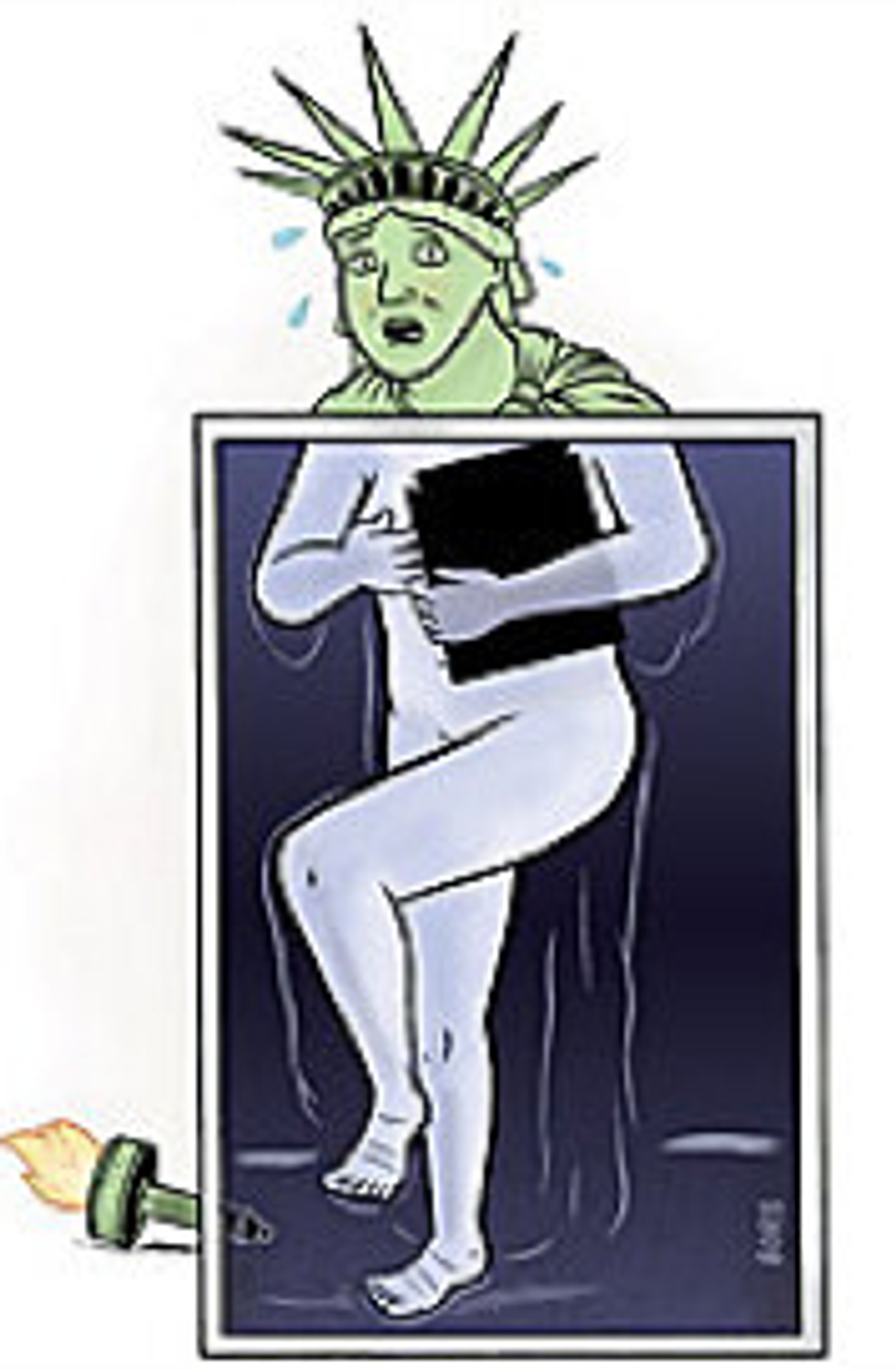There was terror in the skies this week over Texas, caused not by a terrorist but by a pilot--a Flight Standards captain, no less. JetBlue Airways Capt. Clay Osbon, flying Flight 191 from New York's John F. Kennedy International Airport to Las Vegas, began moving up and down the aisle after the jet was airborne, ranting, according to several passengers, about Iraq, Israel, al-Qaida and bombs, calling on passengers to recite the Lord's Prayer, saying that they were "all going down." An off-duty pilot in the cabin went to the cockpit to help the co-pilot with the emergency landing, while passengers and crew subdued Osbon. Osbon, who'd been with JetBlue almost since its founding, was taken to the hospital, suspended with pay, then criminally charged with interfering with a flight crew.
That's enough to inspire a fear of flying in anyone. But just getting to your airplane these days may present a greater risk to your health than the actual flight.
New airport security screening technology, primarily backscatter X-ray devices, have come under increased scrutiny, as their effectiveness is questioned amid concerns that the radiation exposure may cause cancer. Adding to health concerns are both the graphic nature of the images captured, essentially nude photos of every person passing through the machine, and the aggressive--and for some, humiliating--nature of the alternative to the scans, the "enhanced pat-down" by a Transportation Security Administration (TSA) agent.
Republican Sen. Susan Collins introduced a bill that would require independent laboratory testing of the X-ray backscatter machines, exactly what a group of University of California, San Francisco scientists called on the Obama administration to do in April 2010. Responding to the TSA claim (provided by the manufacturer, Rapiscan) that the radiation dose is less than "the dose one receives from eating one banana," professor John Sedat and others wrote: "While the dose would be safe if it were distributed throughout the volume of the entire body, the dose to the skin may be dangerously high. ... There is good reason to believe that these scanners will increase the risk of cancer to children and other vulnerable populations [including pregnant women]." When this risk is multiplied over 700 million annual travelers, Michael Love, Ph.D., the manager of the Johns Hopkins School of Medicine X-ray facility, told Discover magazine, "someone is going to get skin cancer." The European Union has banned the machines.
While flying the past few weekends, I refused to go through the scanners, which is every passenger's right, although the option is almost never indicated anywhere (the Collins bill also requires clear signage). I was made to wait while TSA employees were clearly available to conduct what is euphemistically called an "enhanced pat-down." The agent's aggressive questioning of my decision to "opt out" was matched only by her aggressive pat-down when I would not give in. Arriving back in New York, a friend who had just flown in from Chicago's O'Hare International Airport recounted how the TSA agent had her hands down the front of my friend's pants and said, "Feels like you've lost some weight"!
Who gains? The two manufacturers of the full-body scanners have powerful friends. As reported in The Hill and The Washington Post, L-3 Communications, maker of the millimeter wave scanner, hired lobbyist Linda Daschle, wife of former Sen. Tom Daschle. Rapiscan, the maker of the X-ray backscatter machine, reportedly paid $1 million to the Chertoff Group, run by former Department of Homeland Security (DHS) Secretary Michael Chertoff, while Chertoff appeared in the media touting the value of the machines. Each machine costs the taxpayer about $150,000, but that is only the purchase; installation, then staffing, costs much more.
TSA agents themselves may face the greatest risks. A recent TSA inspector general's report acknowledged that "wing shields be installed to further reduce radiation exposure levels for backscatter operators." It also noted that TSA employees reported insufficient time for training on the machines. Michael Grabell, a reporter with ProPublica who has written extensively on full-body scanners, told me: "Radiation technicians have told some of the TSA screeners that 'If I were on these machines, I'd be wearing a radiation badge.' But the TSA has refused to let them."
All these concerns have led the nonprofit Electronic Privacy Information Center to sue the TSA and DHS, seeking a halt to the use of the scanners, at least until independent testing of the risks is performed, and the results made public.
Until we know that these full-body scanners are safe, I'm opting out.
Denis Moynihan contributed research to this column.
